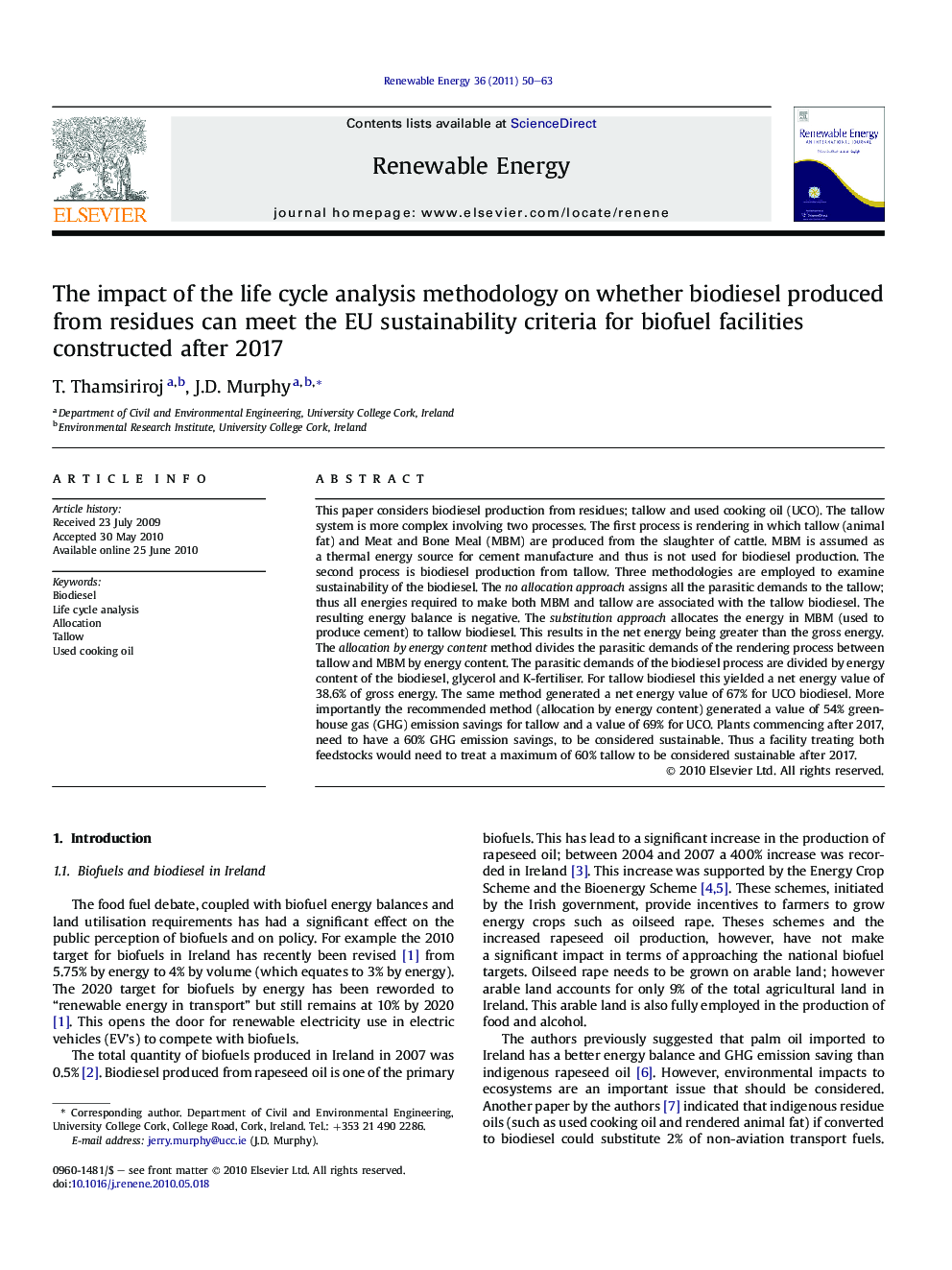| کد مقاله | کد نشریه | سال انتشار | مقاله انگلیسی | نسخه تمام متن |
|---|---|---|---|---|
| 301666 | 512512 | 2011 | 14 صفحه PDF | دانلود رایگان |

This paper considers biodiesel production from residues; tallow and used cooking oil (UCO). The tallow system is more complex involving two processes. The first process is rendering in which tallow (animal fat) and Meat and Bone Meal (MBM) are produced from the slaughter of cattle. MBM is assumed as a thermal energy source for cement manufacture and thus is not used for biodiesel production. The second process is biodiesel production from tallow. Three methodologies are employed to examine sustainability of the biodiesel. The no allocation approach assigns all the parasitic demands to the tallow; thus all energies required to make both MBM and tallow are associated with the tallow biodiesel. The resulting energy balance is negative. The substitution approach allocates the energy in MBM (used to produce cement) to tallow biodiesel. This results in the net energy being greater than the gross energy. The allocation by energy content method divides the parasitic demands of the rendering process between tallow and MBM by energy content. The parasitic demands of the biodiesel process are divided by energy content of the biodiesel, glycerol and K-fertiliser. For tallow biodiesel this yielded a net energy value of 38.6% of gross energy. The same method generated a net energy value of 67% for UCO biodiesel. More importantly the recommended method (allocation by energy content) generated a value of 54% greenhouse gas (GHG) emission savings for tallow and a value of 69% for UCO. Plants commencing after 2017, need to have a 60% GHG emission savings, to be considered sustainable. Thus a facility treating both feedstocks would need to treat a maximum of 60% tallow to be considered sustainable after 2017.
Journal: Renewable Energy - Volume 36, Issue 1, January 2011, Pages 50–63